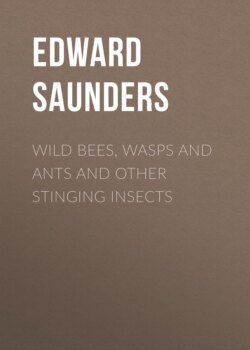Читать книгу Wild Bees, Wasps and Ants and Other Stinging Insects - Edward Saunders - Страница 8
На сайте Литреса книга снята с продажи.
THE SOLITARY GROUPS
ОглавлениеTable of Contents
All the solitary kinds appear to feed themselves on vegetable juices, honey, etc., but there is a well-marked division between those who provision the cells of their offspring with insects, either fully developed or in the larval stages, and those who provision them with the pollen of flowers, honey, etc. The theory is that originally all fed their cells with insects, but that by degrees the more progressive found that the food which suited themselves would equally nourish their offspring, and accordingly provided them with vegetable nourishment. We find no intermediate stages. A certain class still goes on feeding on the old principle. The members of this class are known as "fossors" or diggers, while those which feed on the new principle are called "Anthophila" or flower-lovers. These are not very happy names, as many of the Anthophila dig out holes for their nests just in the same way as the fossors do, and many of the fossors are found in flowers, apparently enjoying them just as much as a truly anthophilous species would, although no doubt often with the ulterior object of capturing some insect for their young! Still these names are known as representing these two sections all over the world, and therefore it is better to keep to them even if they are not as descriptive as one would like them to be.
The fossors, or "diggers", have all comparatively short and bifid tongues, and have, as a rule, little in the way of hairy covering, and what hairs they have are simple and only in very rare instances branched or feather-like. The hind legs of the females are not modified in any way so as to enable them to collect pollen, their legs are usually long and slender, and they are admirably adapted to their life habits of hunting spiders, insects, etc., for their young.
On the other hand, the Anthophila or "flower-lovers", are specially adapted for pollen collecting. Their tongues vary from a short form like that of some fossors to the long tongues of the humble bees. Their hairs are always plumose or branched on some part of the body and the hind legs of the females in most species are provided on the tibia or shin with a special brush on which pollen may be collected. In some of the long-tongued bees, however, this brush occurs on the underside of the body instead of on the tibia. The pollen-collecting arrangements of the different genera of the Anthophila and the corresponding organs for cleaning off the pollen again are amongst the most interesting instances of modification and adaptation: some of the more striking of these will be mentioned later on. (See pp. 65 sqq.)
